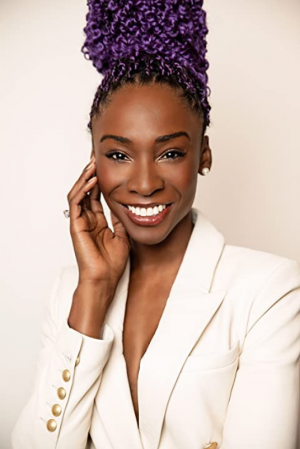
Imagine yourself as a young person named John, who was born and lives in Ridgway, Colorado, where you love the small-town vibe and spend much of your free time hiking and horseback riding. All your life, you’ve wanted to become a firefighter, settle down, and start a family. You haven’t found the right person for that yet, but you’re trying. You enjoy living in a tightknit community that shares your values, and are fairly extroverted and active in that community, volunteering at a food pantry, an animal shelter, and your church, and leading a local Boy Scout troop. You like curling up with a good history book before bed each night.
This is who you are, and you love who you are.
But there’s a problem. Your friends, family, and random strangers on the street all seem to think you’re a completely different person. Everyone calls you “Steve” instead of your actual name. They think you were born in New York City and are spending a year in Ridgway with your parents to escape the stress of your job as a public defender. They think you enjoy big city life. In reality, you wouldn’t be caught dead even vacationing to a big city.
You get weird looks when you go horseback riding because everyone knows (or thinks they know) you’re a video game aficionado who is rarely seen outdoors, even though you’re outdoors all the time. As a guy who wants a long-term relationship, you have trouble finding dates, because every single person you’re attracted to knows that Steve is only interested in short-term flings. Friends and family gift you pulpy sci-fi books even though you’re vocal about preferring historical nonfiction. They never invite you anywhere because Steve, as they say, is a huge introvert. To make matters worse, the name on your driver’s license and your passport is “Steve” even though you wrote your name as “John” when you filled out the application forms. You soon lose your volunteer roles because you can’t legally prove you’re really you.
Put yourself in John’s shoes for a minute. How would you feel? If you’d lived with this jarring disconnect between who you were and who everyone else said you were for your whole life, would you be eager to escape it? Would it aggravate you when people call you Steve and treat you like Steve no matter how much you insist that you’re John? Would you be frustrated that instead of accepting something is wrong with society, society insists something is wrong with you?
Now, for a more fitting analogy, think way back to when you just started to enter puberty. If you were a girl, how shocked would you have been if a thick beard started growing on your face at age twelve? If you were a boy, imagine how strange you’d have felt to look in the mirror one morning to realize you were developing breasts.
Imagine having to prove to your parents, to the legal system, and to society at large, that you were really a girl or a boy, respectively, instead of what your body decided to become. What would that feel like? Would you be afraid, depressed, deeply hurt? How far would you go to make a home of the body you have, to change what you feel needs to be changed, to have a body that fits who you really are?
Globally, the millions of teenagers who face this scenario every year are not girls or boys who “feel like” or are “pretending to be” another gender. They literally are the gender they know themselves to be. If they’re forced to live as the gender that “matches” their body’s sex, then they’d be pretending.
Instead of pressing political hot buttons or echoing trite sound bites, I think it’s more productive to cultivate genuine curiosity about these issues. How does the way other people interpret your body affect how they treat you? Why are women women, or men men? There seem to be many traits separate from mere physicality that define both identities.
For many people who’ve never thought about these issues beyond what they hear in the news, it can take some time and effort to think through them. That’s okay. That’s why I’m writing this blog post: to invite you to be curious, and to help you navigate this complex topic.
People who are transgender are everywhere. About one out of every two hundred people is transgender — about 1.4 million live in the United States alone. You’ve almost certainly met several trans people, whether you realized it at the time or not.
This isn’t a new phenomenon; only the press coverage is new, largely beginning with celebrity Christine Jorgensen in the 1950s. In fact, trans people have been around since the beginning of recorded history. Many cultures recognize genders other than female and male, and even United States culture blurred the lines among gender roles not too long ago. (Don’t believe me? Here’s a picture of President Roosevelt in a dress.) The fierceness with which we defend traditional gender is not only recent; it’s also a bit oblivious to the fact that traditional gender wasn’t always as clear-cut as it became in 1950s America, especially among children and the way kids were raised.
Let’s start with the basics: what does it mean to be transgender? I like Dr. Susan Stryker’s definition, which describes it as moving away from an unwanted gender identity, not necessarily toward any particular one. When someone is born, it’s easy to assume their gender (who they are inside) is the same thing as their sex (the biological characteristics of their body). But the fact that so many people are independently telling the world that the gender they were assigned at birth contradicts their actual gender should give us pause, and reveal that this assumption is just an assumption. We need to dig deeper to understand what’s going on.
Gender identity is different from sexual orientation. Sexual orientation is about who you like, whereas gender identity is about who you are. And like sexual orientation, gender identity is a spectrum, not an either-or scenario. Some people are somewhere between being a woman and a man, and others have no gender at all, or don’t conform to that binary. Nature is messy, and even the boundaries of biological sex aren’t as well-defined as most of us think — just ask the five million people who are born intersex each year. (You’ve also probably met several of them without realizing it.)
When someone changes their gender expression and/or undergoes medical treatment to change their body so that it matches their internal sense of gender identity, this is called transitioning. Not all trans people do this. Some don’t want to deal with medical side effects, some can’t afford the cost of transitioning or want to avoid the severe prejudice they’d face if they did, and some simply prefer not to.
But more importantly, it’s not our business why a trans person chooses to transition or not. Many trans people choose to present themselves as one biological sex while living as the gender commonly associated with another biological sex, and that’s okay. (Think back to your puberty-self in my earlier thought experiment, and ask yourself if you would want to undergo transitional medical treatment. Maybe you would, maybe you wouldn’t. Either is okay. But either way, you’d still be the gender in your head, regardless of your body’s physical features.)
So the title of this post is somewhat misleading. Many trans people feel they were born into exactly the right body; it’s the expectations for that body’s behaviors and roles in society that are the problem.
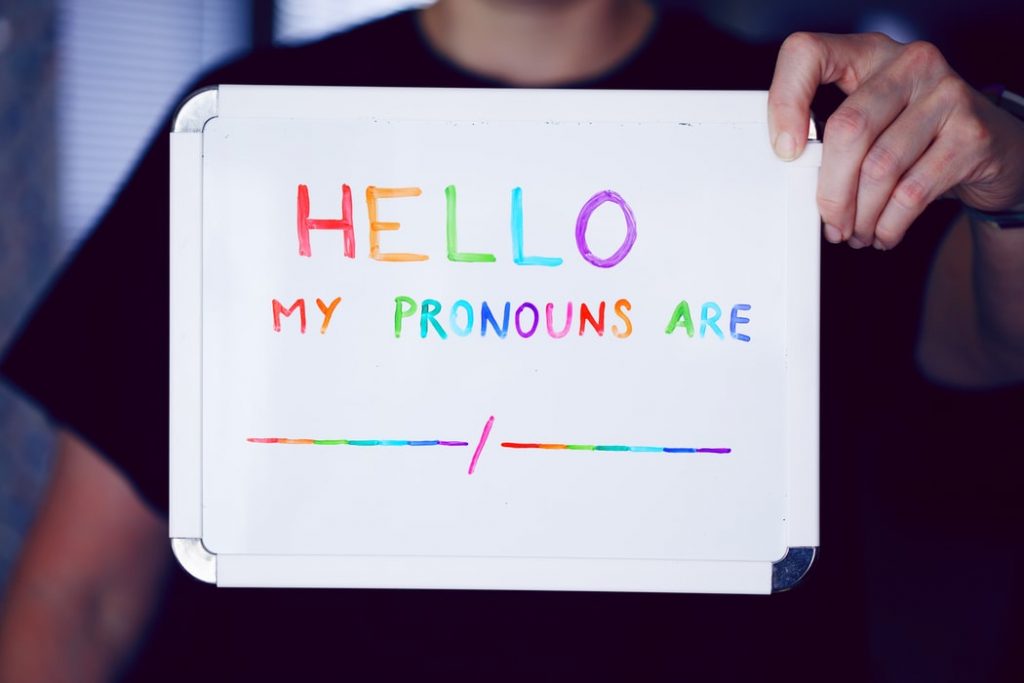
Given all of the above, it’s respectful to call transgender people by the name they prefer to use, and with the pronoun they prefer to use (they or he or she — attempts have been made at creating new pronouns, but none have caught on so far, but stay tuned). This can feel weird to some non-trans people at first, since we’re so used to using the pronoun associated with a person’s physical appearance rather than their identity. But again, I encourage you to read the earlier thought experiment and imagine how you’d feel about this if it was you experiencing it.
(By the way, feel free to ask people what pronoun they prefer. It’s not the scary issue it’s made out to be in the press. It’s just as polite as asking if someone named Alexander prefers to go by Alex or Al instead. If you’re worried they might be uncomfortable—they probably won’t be—it can help to share your pronouns first to break the ice.)
What brings a person to identify as transgender? We have hypotheses, but ultimately, we aren’t sure. This is an active area of discussion and research. Since our media culture insists with furious certainty that gender is a completely social construct (that is, an idea everyone accepts that’s rooted in social conventions rather than in objective reality), it may surprise you to learn that both science, and much of the trans community itself, aren’t sure yet. Both are open to the possibility that gender may arise from a mix of social and biological determinants. There is a related discussion of whether gender exists at all, but that’s beyond the scope of this blog post.
Evidence suggests there is a genetic component. Additional evidence suggests that much of what we call gender is indeed socially constructed. As is common in nature-nurture debates in which one side wants the answer to be exclusively nature and the other exclusively nurture, the more accurate conclusion is that it’s probably both. We know that gender identity is in place by age three, so any social influences affecting the formation of gender identity must occur before that age. Parenting seems to have little effect.
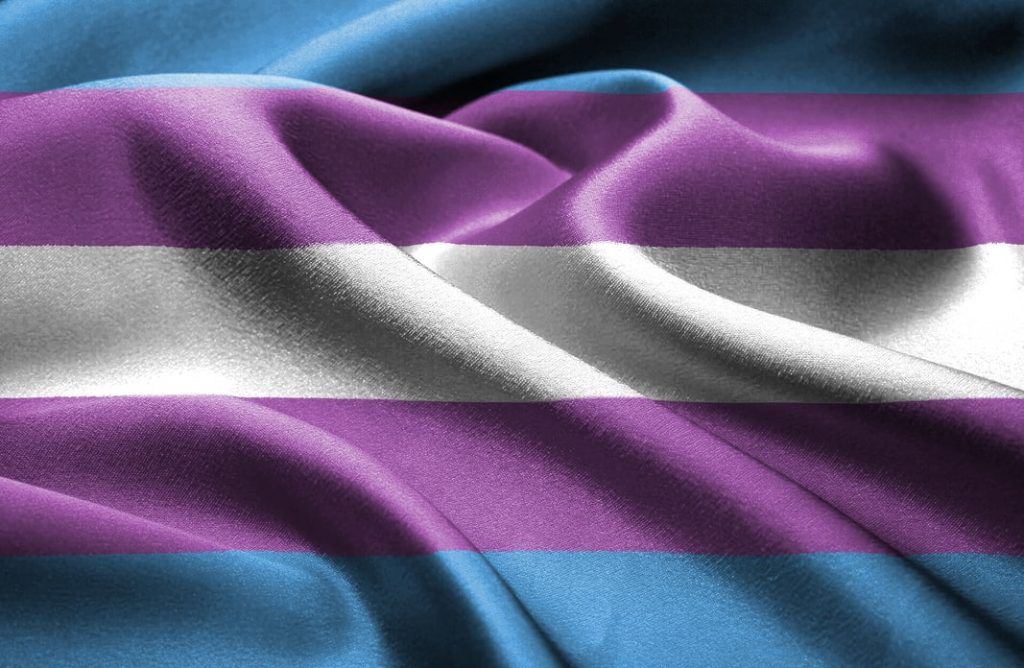
What is clear is that for trans people, being trans simply a part of who they are. Enduring the frequent disputes and explanations that lawmakers, doctors, and families demand of trans people is certainly not a choice anyone would make if they could.
For anyone willing to approach these topics with good-faith curiosity rather than political attacks, there’s still a lot of room to explore and discover. We’re still discussing some of the foundations of this topic. Where does the definition of gender role end and the definition of gender begin? To what extent are sex and gender separate and to what extent are they intertwined? You will find strong opinions on these topics is academic and social justice circles, but ultimately, humans are still figuring stuff like this out, and that’s okay. If you’re respectful, you’re more than welcome to join in the conversation.
Why does all this matter to someone who isn’t trans? Because many of the world’s millions of trans people face extraordinary levels of discrimination and persecution.
From a very young age, many trans people are told they’re sick, disgusting, and/or deviant, all over a trait over which they have no control. They can be rejected, bullied, or even abused by families or peers, and have trouble finding housing or work. A disproportionately large share of the trans population is homeless, and over 20% have been homeless at some point. To add insult to injury, public policies often force trans people into demeaning or compromising situations, like trans man Michael Hughes:
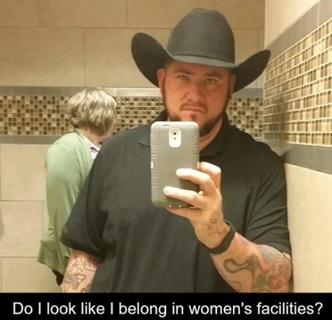
It’s no wonder trans people have much higher rates of depression, anxiety, and suicide than the general population. Opponents of trans rights often point to such mental illness as a corollary of being transgender rather than as a byproduct of intense discrimination. But science refutes that being transgender is a mental illness. In fact, conversion therapy, which attempts to force trans people to accept the gender they were assigned at birth, substantially increases suicide risk. Tragically, parents of children and teenagers who identify as transgender have subjected at least 200,000 of them to conversion therapy in the United States alone.
It doesn’t have to be this way. As transequality.org puts it, “Transgender people – especially transgender people who are accepted and valued in their communities – are able to live healthy and fulfilling lives.”
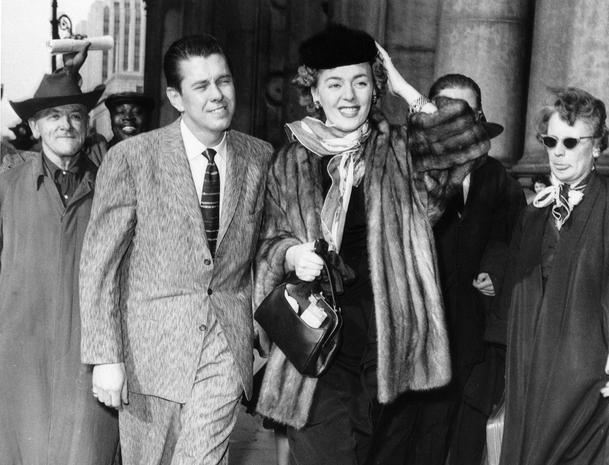
It’s really interesting to go back and read some of the news coverage of Christine Jorgensen’s transition in the early 1950s. There was some condescension and political fury, but not as much as you might think. By and large the news media’s tone was… celebratory. This was an age when the marvels of modern technology could do anything: split the atom, store information in computers, and soon send objects into space. People were more curious about Jorgensen’s transition than they were anything else. They were in awe of the technological miracle of “turning a man into a woman.”
As technology has progressed over the decades, using it to modify our physical bodies to better match the self-identity we have in our heads has become hardly unique to transgender people. We get prostheses and cosmetic surgery. We express ourselves through tattoos and piercings. We install medical devices to keep the pace of our hearts. The difference is that these body modifications are socially acceptable.
As technology continues to develop in the future, each of us will gain ever more precise control over how our bodies conform to our internal identities, and how our bodies interact with society and our social roles. It’s possible that by the end of this century, the technology will exist to transcend surgeries and hormone treatments, and let people transition to a different biological sex at the genetic level, XX to XY or vice versa. (How silly today’s anti-trans crowd will look then.)
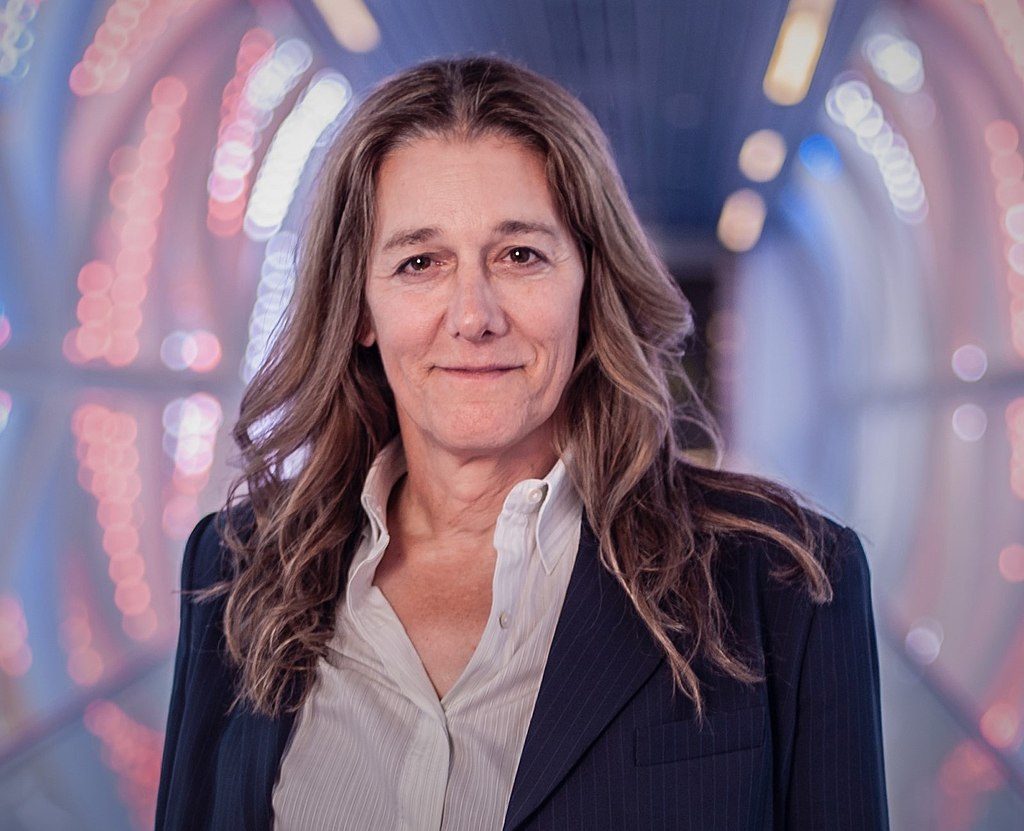
It’s no coincidence that one of the leading voices in the transgender community, Martine Rothblatt, is also one of the leading voices in the transhumanist and futurist communities. She has wise, and probably prescient, words on the intersection between these topics: “One’s gender is merely an important subset of choosing one’s form. By ‘form’ I mean that which encloses our beingness – flesh for the life we are accustomed to, plastic for the robots of science fiction, mere data for the avatars taking over our computer screens.”
As transhumanists like Rothblatt (and me) believe, there may be infinite possible “ways of being,” and our human bodies limit us to only a tiny subset of them. To explore many more of them is still within the realm of science fiction. But at the current, rapid pace of technological development, this won’t be the case for long. Tattoos and implanted defibrillators may be small, initial steps on humanity’s path of body alteration. From this perspective, transgender people who choose to medically transition can be thought of as brave pioneers, leading humanity with a giant step into a future where our bodies, and perhaps even our identities, become as malleable as today’s software.
Concerns over autocrats using genetic engineering technology for eugenics or “master race” ideologies are legitimate and genuinely terrifying. But if we can bolster liberal democracy, avoid regressing into authoritarianism, and fix the world’s devastating economic inequities, this technology would vastly improve everyone’s quality of life.
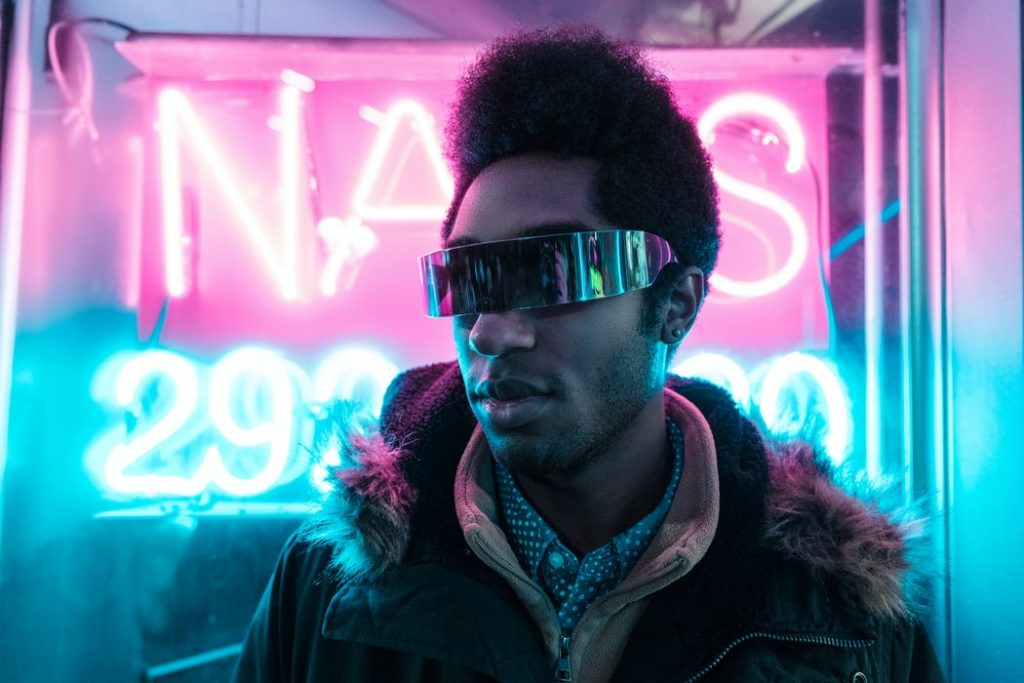
Imagine the boom in diversity in such a world, where our bodies can almost literally become whatever we want them to be, when our identities are no longer limited by biological constraints. Safe in the cradles of equity and democracy, imagine the creativity that would be unleashed. No more cancer, congenital illnesses, nor disease of any kind. Better health, longer lifespans. People three stories tall and three inches tall. Blue people, green people, purple people, with multicolored hair and eyes and nails, of genders and sexual biologies that haven’t even been invented yet, able to experience joy and happiness in even more diverse ways. Part-machine people. All-machine people, except for their brains. People with TV screens for skin and cell phones in their eyes. Winged people who can fly. People who can hold their breath for days. People who can swim unaided to the bottom of the ocean. People who can hear ultrasound and see infrared.
Even these are pale guesses at the wonders that may one day become possible. As Rothblatt suggests, transgender people who choose to transition may be an important part of a much more expansive future ecosystem. Once technology evolves to the point where this ecosystem becomes apparent to everyone, maybe we’ll regain some of that initial curiosity that surrounded Christine Jorgensen’s transition. Some of the awe and the celebrating, too. I hope we can get to that point before then, though.
Even if that future never comes to pass, we need to make the world a much better place for trans people now. What can we do?
We can start with basic things like using the right pronouns. (If you make a mistake, don’t make a scene; just apologize and move on—we’re all human after all.) We can speak up for trans rights and acceptance in our workplaces and local governments. Ending discrimination ultimately starts inside each of our own minds, so questioning our own attitudes and beliefs is another healthy path.
Policies governing public and private organizations have an immense impact on trans people’s qualities of life, so yes, we should vote for politicians who won’t enact discriminatory laws, and who will work to repeal existing discriminatory laws.
We need to end the disturbing abuse of transgender people in our prison system. We should make it easy for trans people to change their IDs to match their actual gender. We should get transition hormones and surgeries covered by insurance companies. (Transition surgeries are not elective. They save lives.) Gender-affirming treatment is especially important for minors, yet many states currently ban it in this age group, despite rigorous research and evidence supporting its safety, effectiveness, and excellent outcomes.
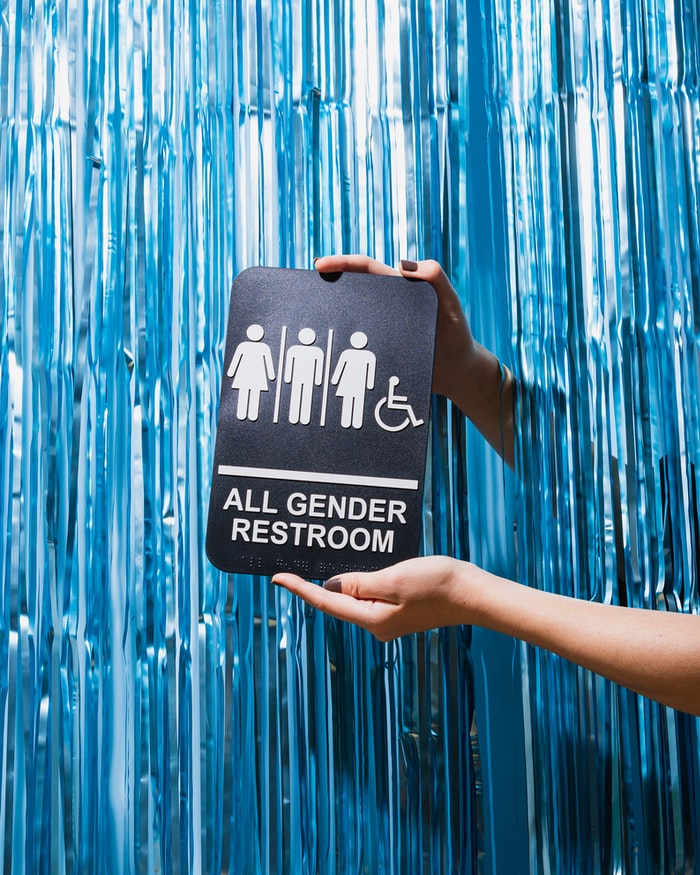
And then, of course, there’s bathrooms. It’s completely reasonable to worry about safety in such private spaces, but a lot of this debate is a media creation.
Exhibit A: Trans people are no more dangerous or predatory than the general population.
Exhibit B: Even beyond the typical gender-neutral bathroom, there are plenty of ways to design bathrooms to ensure both that people of all genders can use them and that everyone is safe. You can Google it to find lots of cool examples.
Last but not least, go out and meet some trans people! Believe it or not, they are actually people rather than political footballs getting tossed around the internet. You can make friends with them, and learn their goals, dreams, fears, and loves. It’s up to all of us to cultivate a world where those of us who identify as transgender are safe, respected, and included.
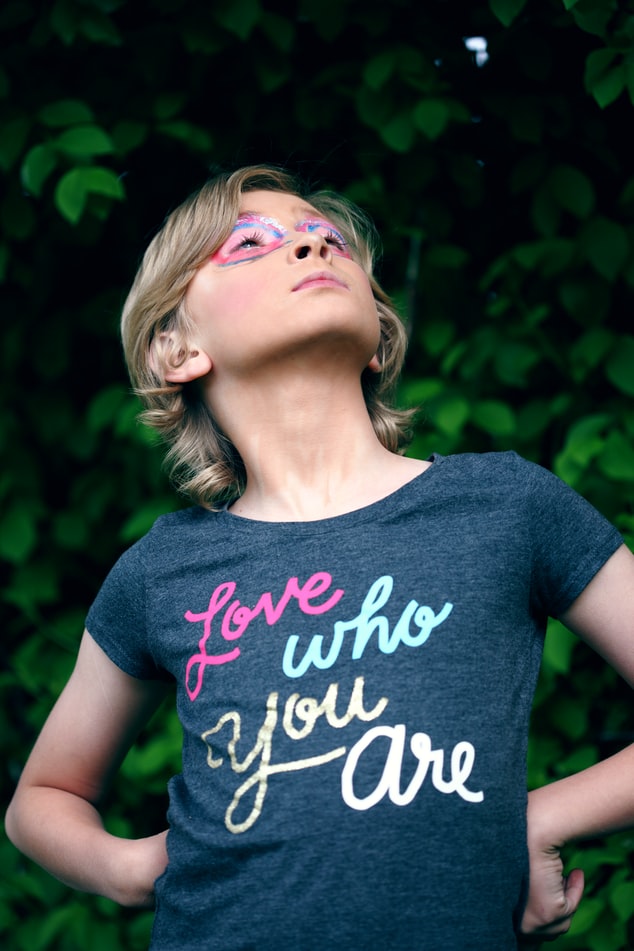
Only about 10% of the ideas contained in this article are original to me. Most of them I absorbed from the countless online articles I read in preparation for this blog post. I’ve linked to many of them above, and I would like to thank their trans writers for both teaching me and for sharing their perspectives, especially Susan Stryker in her fantastic book Transgender History. It is my humble hope that I’ve done their perspectives justice with this post.
Thanks also to Mya Alexice, David Orión Pena, and David Sigurani for their comments on this post.

